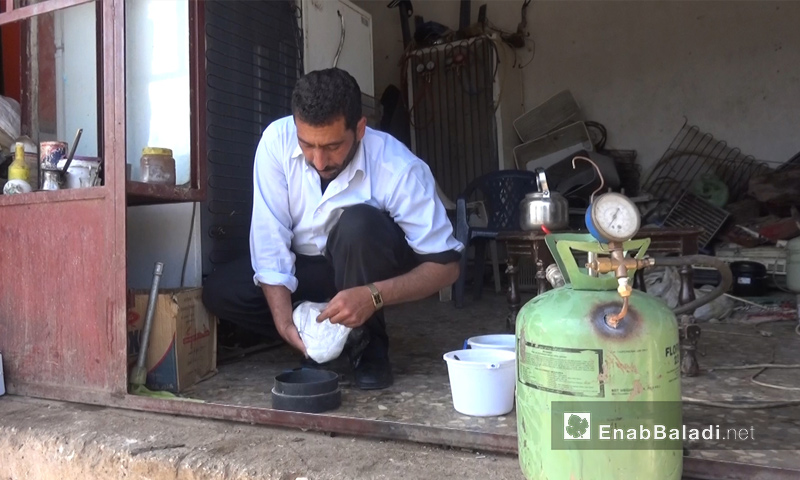



From some aluminum pieces that are socked in water and a little bit of a chemical material, water breaks down into oxygen and hydrogen, a simple, but dangerous, equation to get hydrogen gas, amidst the people’s attempts at using it in rural Homs that has been besieged for years.
The Syrian besieged people have created different means to counter inability and lack of resources; due to which, many innovations have appeared in the past a few years, including turning waste into fuel resorting to basic devices in Eastern Ghouta in 2014.
Today, northern Homs is witnessing a similar attempt to attain hydrogen from water; it is one of the most available elements around the world, amidst efforts at turning it into a source for green energy, seeking to reach a clean environment, despite the risks of these experiments and the fuel they produce.
“A chemical material, the kilo gram of which costs 500 Syrian pounds, gives you the ability to get gas for a whole year,” the man behind the idea and the Head of the al-Taybah al-Gharbiyah local Council Samer al-Diyab says.
The method is not new, but applying it requires “large” factories, according to Samer, who pointed out that the traditional methods can extract 20% of the hydrogen present in water. However, what Samer is trying to do is extracting 95% to store the fuel in special cylinders provided with safety valves to limit the gas’ danger.
Enab Baladi has interviewed doctor Ahmad Jumaa, the Dean of the Faculty of Renewable Energy at “Generations and Technology University;” he said that these efforts are the practical application of an old idea that any chemistry teacher know, pointing out that it is also present on “YouTube”, the reason why it is not considered an invention.
Jumaa explained that this method “is not suitable to be used in the besieged areas, in the shadow of the lacking sufficient awareness about the means to deal with hydrogen,” pointing out that “it is a very dangerous gas that might turn into a bomb, if exposed to heat of the sun or in case of rolling the cylinder of hydrogen on the ground.”
The device used by Samer is a gas cylinder containing a pressure clock, openings for water entry and safety valves. To reduce the risk of hydrogens, I use dilute materials. “We treat these substances to bring the fuel to a certain pressure, at which it stops reacting and thus it becomes non-hazardous,” he said.
The Dean encouraged innovate and creative thinking, but within the scientific framework and under the supervision of specialists.
Lawyer Iyad al-Bakour from Hawla mentioned ways that he considers as safer, such as waste and animal dung fermentation, to get the fuel, which are ways that have been previously used by some residents in rural Homs.
if you think the article contain wrong information or you have additional details Send Correction